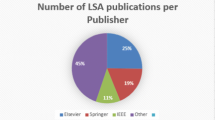Abstract
We analyze different ways of constructing binary extended formulations of polyhedral mixed-integer sets with bounded integer variables and compare their relative strength with respect to split cuts. We show that among all binary extended formulations where each bounded integer variable is represented by a distinct collection of binary variables, what we call “unimodular” extended formulations are the strongest. We also compare the strength of some binary extended formulations from the literature. Finally, we study the behavior of branch-and-bound on such extended formulations and show that branching on the new binary variables leads to significantly smaller enumeration trees in some cases.




Similar content being viewed by others
References
Angulo, A., Van Vyve, M.: Fixed-charge transportation problems on trees. OR Lett. 45, 275–281 (2017)
Atamtürk, A.: On the facets of the mixed-integer knapsack polyhedron. Math. Program. B 98, 145–175 (2003)
Balas, E.: Disjunctive programming. Ann. Discrete Math. 5, 3–51 (1979)
Balas, E., Ceria, S., Cornuéjols, G.: A lift-and-project cutting plane algorithm for mixed 0–1 programs. Math. Program. 58, 295–323 (1993)
Bodur, M., Dash, S., Günlük, O.: Cutting planes derived from extended LP formulations. Math. Program. 161, 159–192 (2017)
Bodur, M., Dash, S., Günlük, O., Luedtke, J.: Strengthened benders cuts for stochastic integer programs with continuous recourse. INFORMS J. Comput. 29, 77–99 (2016)
Bonami, P., Margot, F.: Cut generation through binarization. Math. Program. B 154, 197–223 (2015)
Conforti, M., Cornuejols, G., Zambelli, G.: Integer Programming. Springer, New York (2014)
Cook, W.J., Kannan, R., Schrijver, A.: Chvátal closures for mixed integer programming problems. Math. Program. 47, 155–174 (1990)
IBM ILOG-CPLEX. Cplex 12.7 User’s Manual (2017)
Dash, S., Günlük, O., Lodi, A.: MIR closures of polyhedral sets. Mathem. Program. 121(1), 33–60 (2010)
Dey, S.S., Louveaux, Q.: Split rank of triangle and quadrilateral inequalities. Mathem. Oper. Res. 26, 432–461 (2011)
Del Pia, A., Weismantel, R.: On convergence in mixed integer programming. Math. Program. 135, 397–412 (2012)
Gomory, R.E.: An Algorithm for Integer Solutions to Linear Programs. In: Graves, R.L., Wolfe, P. (eds.) Recent Advances in Mathematical Programming, pp. 269–302. McGraw-Hill, New York (1963)
Glover, F.: Improved linear integer programming formulations of nonlinear integer problems. Manag. Sci. 22(4), 455–460 (1975)
Gupte, A., Ahmed, S., Cheon, M., Dey, S.: Solving mixed integer bilinear problems using MILP formulations. SIAM J. Optim. 23(2), 721–744 (2013)
Hildebrand, R., Weismantel, R., Zenklusen, R.: Extension complexity lower bounds for mixed-integer extended formulations. In: Proceedings of the ACM-SIAM Symposium on Discrete Algorithms (SODA), pp. 2342–2350 (2017)
Laurent, M., Sassano, A.: A characterizatoin of knapsacks with the max-flow min-cut property. Oper. Res. Lett. 11, 105–110 (1992)
Lovász, L., Schrijver, A.: Cones of matrices and set-functions and 0–1 optimization. SIAM J. Optim. 1(2), 166–190 (1991)
Owen, J.H., Mehrotra, S.: A disjunctive cutting plane procedure for general mixed-integer linear programs. Math. Program. 89(3), 437–448 (2001)
Owen, J.H., Mehrotra, S.: On the value of binary expansions for general mixed-integer linear programs. Oper. Res. 50, 810–819 (2002)
Roy, J.S.: “Binarize and Project” to generate cuts for general mixed-integer programs. Algorithmic Oper. Res. 2, 37–51 (2007)
Schrijver, A.: Theory of Linear and Integer Programming. Wiley, New York (1986)
Sherali, H.D., Adams, W.P.: A hierarchy of relaxations between the continuous and convex hull representations for zero-one programming problems. SIAM J. Discrete Math. 3, 411–430 (1990)
Sherali, H.D., Adams, W.P.: A Reformulation-Linearization Technique for Solving Discrete and Continuous Nonconvex Problems. Kluwer Academic Publishers, Norwell (1999)
Acknowledgements
We would like to thank Andrea Lodi for pointing out the importance of binarization techniques and for fruitful discussions.
Author information
Authors and Affiliations
Corresponding author
Rights and permissions
About this article
Cite this article
Dash, S., Günlük, O. & Hildebrand, R. Binary extended formulations of polyhedral mixed-integer sets. Math. Program. 170, 207–236 (2018). https://doi.org/10.1007/s10107-018-1294-0
Received:
Accepted:
Published:
Issue Date:
DOI: https://doi.org/10.1007/s10107-018-1294-0




